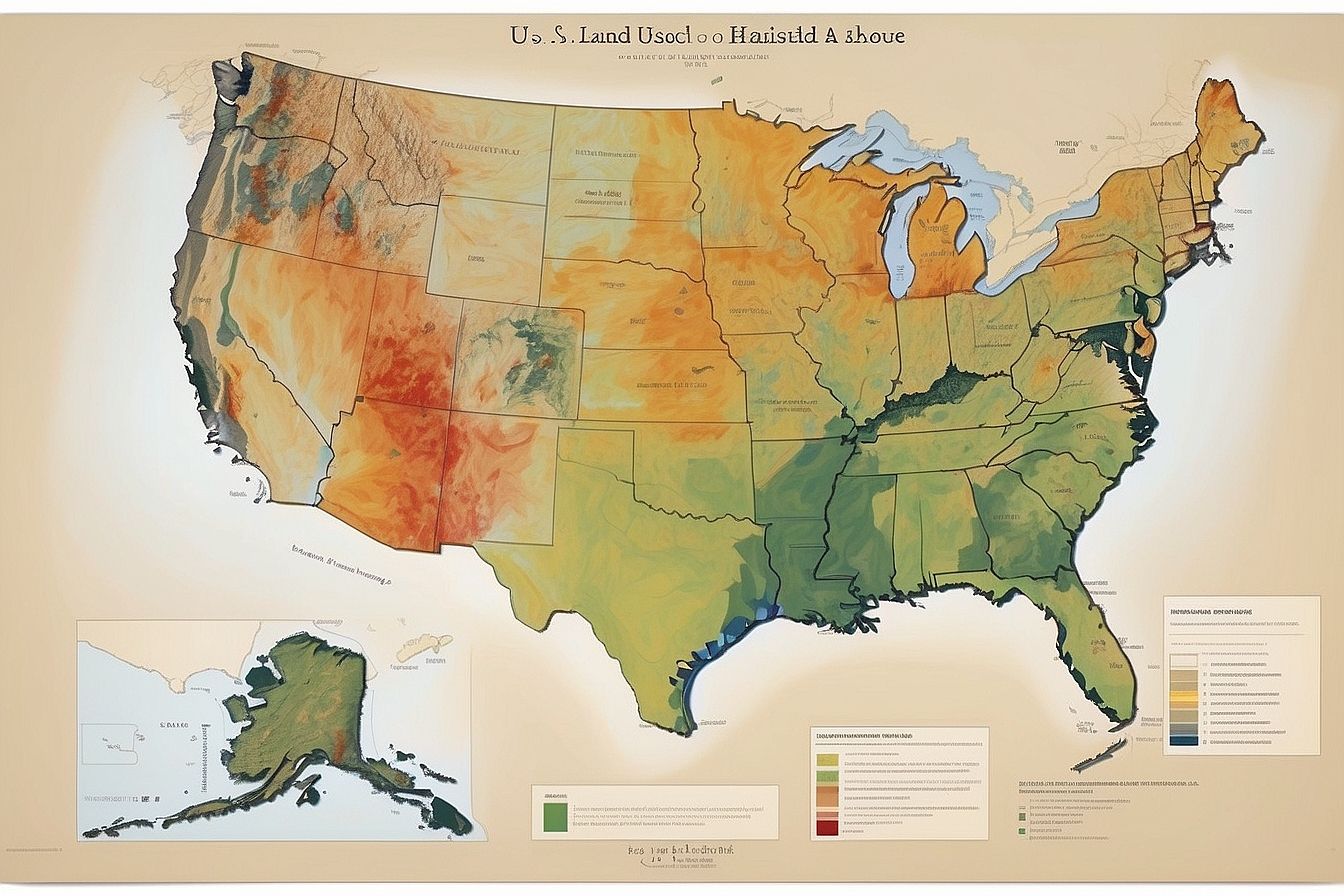Observing wildlife in its prime and ecosystems pulsating with life presents a formidable challenge in today’s rapidly evolving world. Like you, we share a deep concern for vanishing habitats and the worrisome decline in species populations – it’s quite alarming to learn that over one million plant and animal species are at risk of extinction due to changes in land use.
Our insights delve into hands-on approaches we can adopt to reverse the trajectory of biodiversity loss through intelligent land conservation tactics. Uncover actionable solutions as we navigate this together—do read on!
Key Takeaways
- Land use changes like deforestation and urbanisation pose significant threats to biodiversity by causing habitat loss, fragmentation, and altering ecosystem balances.
- Sustainable agriculture practices such as agroforestry and crop diversification can minimise negative impacts on biodiversity while promoting healthier ecosystems.
- Climate change affects species by altering their habitats, forcing them to adapt or migrate, which must be accounted for in conservation strategies.
- Effective land use planning includes identifying trade – offs between conservation and ecosystem services, implementing zoning plans, and incorporating land governance into programming.
- Restoring degraded lands with sustainable management practices is key to protecting ecosystems and wildlife habitats for future generations.
The Impact of Land Use Change on Biodiversity
Land use change, such as deforestation and urbanisation, has a significant impact on biodiversity. It can lead to habitat loss and fragmentation, affecting forests and bird populations as well as altering the balance of different species in an ecosystem.
Understanding these impacts is crucial for minimising biodiversity loss from agriculture and other land use practices.
Effects on Forests and Bird Populations
Forests teem with life, functioning as crucial habitats for countless species. They offer shelter, food and nesting sites for birds from eagles to songbirds. However, when trees are cut down or fragmented by roads and development, these essential services are lost.
Bird populations then face significant declines as their natural homes disappear.
We must take immediate steps to safeguard our forests and the birds that rely on them. This involves habitat conservation efforts like establishing protected areas and promoting sustainable land use practices.
We work tirelessly to ensure terrestrial ecosystems thrive through reforestation efforts and ecosystem preservation activities. Advancing into the next topic, we explore how agriculture interferes with biodiversity and ways to reduce this impact for a greener future.
Understanding and Minimising Biodiversity Loss from Agriculture
Transitioning from the impact of land use change on forests and bird populations, it’s imperative to recognise the significant role of agriculture in biodiversity conservation. Agricultural activities often lead to habitat destruction, fragmentation, and degradation, which can result in a loss of species diversity.
Implementing sustainable farming practices such as agroforestry, crop diversification, and organic farming can help minimise the negative impacts on wildlife habitats while promoting healthier ecosystems.
By integrating wildlife-friendly practices into agricultural landscapes and investing in sustainable land management initiatives, we can reduce the adverse effects of agriculture on biodiversity.
Additionally, supporting and promoting conservation agreements that incentivise farmers to preserve natural habitats within their land holdings is crucial for safeguarding wildlife corridors and preserving vital habitats.
The Role of Climate and Land Use Change on Species
Climate and land use change have a profound impact on species across the globe. Changes in temperature, precipitation patterns, and extreme weather events directly affect the habitats of many species.
Additionally, alterations in land use, such as deforestation or urban expansion, can lead to habitat loss and fragmentation. These changes force many species to adapt to new conditions or migrate in search of suitable habitats.
It is crucial for conservation efforts to consider these factors when developing strategies to protect and preserve biodiversity.
Land Use Planning for Biodiversity Conservation
When it comes to land use planning for biodiversity conservation, it’s crucial to identify trade-offs between conservation and ecosystem services. This includes allocating rules and zoning plans, as well as incorporating land and resource governance into conservation programming.
https://www.youtube.com/watch?v=6xNsmMeizxA
Identifying Trade-Offs Between Conservation and Ecosystem Services
We navigate trade-offs to balance nature conservation and the services provided by ecosystems. This involves considering the impacts of land use on both biodiversity and human needs.
- Understanding the ecological impacts of conservation measures, such as habitat preservation, on ecosystem services like water purification and soil fertility.
- Evaluating the economic costs and benefits associated with prioritising biodiversity conservation over potential land uses for agriculture or urban development.
- Weighing the short-term gains from exploiting natural resources against the long-term benefits of ecosystem preservation.
- Balancing the needs of local communities for livelihoods and sustenance with the imperative to safeguard wildlife habitats and maintain ecological diversity.
- Anticipating potential conflicts between conservation goals and competing demands for land, such as infrastructure development or energy production.
Land Use Allocation Rules and Zoning Plans
Land use allocation rules and zoning plans are crucial for effective biodiversity conservation. Zoning involves designating specific areas for different land uses to minimise conflicts and enable sustainable coexistence between human activities and wildlife habitats. This includes the identification of protected areas, managed use zones, and corridors connecting different habitats. The allocation of land for conservation purposes helps in maintaining ecological balance and safeguarding critical ecosystems. Additionally, zoning plans help in regulating development activities that could potentially threaten biodiversity. These measures are essential in ensuring the long-term protection of wildlife and their habitats.
Incorporating Land and Resource Governance into Conservation Programming
Incorporating land and resource governance into conservation programming is crucial for preserving biodiversity. Engaging in sustainable management practices, such as implementing clear land use allocation rules and zoning plans, helps protect terrestrial ecosystems and wildlife habitats.
By integrating effective resource governance strategies, we can contribute to environmental stewardship and ensure the preservation of natural resources for future generations.
Restoring degraded lands is another vital aspect of conservation programming. Implementing measures to restore damaged ecosystems will aid in wildlife protection and habitat preservation, thus contributing to the overall goal of biodiversity conservation.
Restoring Degraded Lands and Implementing Sustainable Management Practices
Restoring degraded lands is crucial for preserving biodiversity. Implementing sustainable management practices helps to protect ecosystems and wildlife. To achieve this, the following steps are essential:
- Rehabilitating degraded habitats by planting native vegetation and removing invasive species.
- Establishing protected areas and wildlife corridors to connect fragmented habitats, promoting species movement and genetic diversity.
- Collaborating with local communities for sustainable resource management, empowering them as stewards of their natural environment.
- Promoting agroforestry and sustainable agriculture to reduce habitat destruction while supporting local livelihoods.
- Utilising eco-friendly land management techniques such as low-impact logging and rotational grazing.
Conclusion
In conclusion, land plays a crucial role in biodiversity conservation. Ecosystem protection and wildlife conservation heavily rely on effective land use planning. Terrestrial ecosystem conservation and habitat protection are vital for preserving biodiversity.
Implementing sustainable management practices is essential for ecological preservation and natural resource conservation.
FAQs
1. What is the role of land in biodiversity conservation?
Land plays a crucial role in biodiversity conservation by providing ecosystems where wildlife can thrive and diverse species are protected for ecosystem health.
2. How does land use planning benefit wildlife conservation?
Smart land use planning ensures natural habitats are preserved which is essential for the survival of various species, supporting ecological preservation and wildlife well-being.
3. Can protecting terrestrial ecosystems really help preserve biodiversity?
Yes, safeguarding terrestrial ecosystems is key to maintaining the balance of nature, offering habitat protection, and helping with the overall aim of biodiversity preservation.
4. Why should we focus on natural resource conservation as part of ecological preservation?
Focusing on natural resource conservation helps protect our planet’s delicate systems; it keeps vital resources intact for future generations while aiding in the protection and sustainability of all living things.





